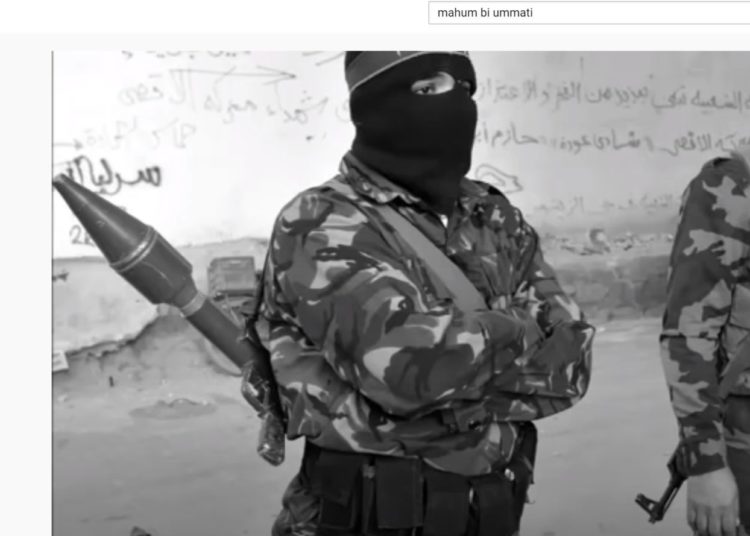Abdullah Bozkurt
YouTube videos, most featuring jihadist content, helped radicalize Mevlüt Mert Altıntaş, the 22-year-old Turkish police officer who assassinated Russian Ambassador to Turkey Andrei Karlov on December 19, 2016, an expert report found in the murder investigation case file has revealed.
According to the June 2017 technical report on the Asus brand computer used by the killer, YouTube videos that showed preaching by known jihadist clerics, terrorist attacks in the United States and France, and videos related to al-Qaeda and the Islamic State in Iraq and Syria (ISIS) were watched by Altıntaş at various times.
Investigators examined the computer seized from the home of the killer and submitted a report on his YouTube searches to the prosecutor’s office on June 13, 2017. The report, although later incorporated in the indictment file, was downplayed by prosecutor Adem Akıncı, who went to great lengths to suppress the evidence that the killer had links to various jihadist groups including al-Qaeda and was radicalized by several pro-government imams, including two who worked for the government religious authority, the Diyanet.
On August 25, 2016 at 1:05 hours the assassin made a search on YouTube for videos of Turkish Salafist cleric Halis Bayancuk (known by the assumed name of Abu Hanzala). Hanzala has been in and out of Turkish prisons and indicted on charges of aiding and abetting al-Qaeda and ISIS. He is currently in pretrial detention.
Altıntaş made several searches on December 12, 2016, looking for videos about the September 11, 2001 al-Qaeda terror attacks on New York City. On the same day he also watched videos of Abu Basir al-Hindi, a British fighter of Indian origin who was killed in November 2015 while fighting al-Qaeda affiliate the al-Nusra Front in Syria close to the Turkish border. The government of Islamist President Recep Tayyip Erdogan has been in bed with al-Nusra in order to topple the Bashar al-Assad government. Al-Hindi’s jihadist saga was covered on Turkish jihadist networks, and his story has become popular among Turkish jihadists.
Technical report on the YouTube searches made by the killer of the Russian ambassador reveals his jihadist links:
On December 15, 2016 Altıntaş searched for Yemeni-American jihadist Anwar al-Awlaqi, a cleric who inspired Maj. Nidal Malik Hasan, the gunman in the November 5, 2009 shootings that killed 12 US soldiers and a doctor at the Fort Hood army base in Texas. Umar Farouk Abdulmutallab, a Nigerian man who attempted to blow up a Northwest Airlines flight as it landed in Detroit on Christmas Day in 2009, was reportedly one of al-Awlaqi’s students. Al-Awlaqi was killed in a US drone attack in 2011.
Al-Awlaqi’s book titled “44 Ways to Support Jihad” (Cihadı Desteklemenin 44 Yolu, in the version translated into Turkish) was published by Küresel Kitap, a media outlet known to publish and distribute works in Turkish by al-Qaeda and ISIS. The book, although banned by a Turkish court, is widely available in Turkey since the authorities do not enforce the court order. Sales receipts showed that Altıntaş also ordered this book from a publisher in Turkey and donated it and other jihadist books he bought to a friend on the day he killed the Russian envoy.
The records show that the killer accessed YouTube on a number of occasions to watch jihadist songs called “nasheed” for inspiration, which included al-Nusra and other al-Qaeda songs in non-Turkish languages.

On December 18, a day before he killed the Russian ambassador, the jihadist police officer watched videos about Chérif and Said Kouachi, the brothers who killed 12 people when they raided the offices of the French satirical weekly Charlie Hebdo in Paris on January 7, 2015. The brothers were killed by French police after a two-day manhunt. On the same day he searched for videos about the assassination of former Pakistani Prime Minister Benazir Bhutto, which took place on December 27, 2007 during an election rally. He repeatedly watched 9/11 videos as well as jihadist nasheed songs, apparently to boost his resolve to murder the Russian ambassador.
On the morning of the December 19, the day he took Russian ambassador’s life with his government-issued weapon, the killer continued to watch a jihadist nasheed titled “Mahum Bi Ummati Ahmadin,” which is widely used by terrorist groups to convey a message of violence that furthers their extremist rhetoric and propaganda. The records indicate he accessed nasheed song videos three times around noon.
He also watched videos on al-Qaeda in Yemen and al-Nusra videos reported by Vice News, jihadist videos by Turkish TV network Habertürk and documentaries about ISIS as well as videos about Saddam Hussain, Che Guevara and Fidel Castro.
There are a number of pieces of evidence in the case file that show the killer was radicalized by jihadist literature, attended prayer circles organized by pro-government jihadist cleric Nurettin Yıldız and had been befriended by known al-Qaeda militants. However, the government did not pursue the leads into jihadist networks and did not investigate al-Qaeda figures who worked with the killer. It was also revealed that the Erdoğan government awarded the killer 34 bonuses in two years’ time.













